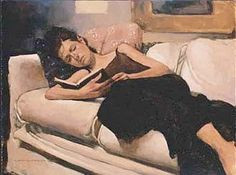| When writing about close reading, I have often mentioned that there are multiple approaches to reading. Most elementary teachers and many secondary English teachers don’t know much about these different approaches or why they have been controversial. Thus, when someone takes pot shots at close reading they are surprised and wonder what may be going on. Towards trying to clarify such disagreements, and to expose the limitations of close reading (and why we wouldn’t want to embrace it too tightly), I have sketched out three major approaches to reading touted by English Departments over the past century. I conclude with my own sense of where these belong developmentally. Hope you find it useful. Scholastic Approach This first approach says that to interpret a text it is necessary to trace its roots of creation or the author’s original intent. Text is imperfect and time changes things so readers cannot rely solely on an author’s words to make sense of a text. Such a reading of the Gettysburg Address would involve students in reading Pericles’ Oration and Everett’s eulogy (the speech that immediately preceded Lincoln’s that day), along with any notes or other speeches Lincoln might have made or remarks about the address that he may have made to his contemporaries. It would be a good idea to come armed with a good Nineteenth Century dictionary, too, preferably one that was available to Lincoln. (Garry Wills, "Lincoln at Gettysburg" is a great example of this kind of reading). Close Reading Close reading, on the other hand, places the meaning in the text itself. The author’s intentions aren’t what readers should be probing, but the author’s words are the focus. Authors can be awfully unreliable when telling (or remembering) why they wrote something. To read closely means to gain the meaning of the text and how it works from an analysis of the text itself, with little or no outside information. Such reading includes reading and rereading, weighing words and structures, to try to crack an author’s code. This self-contained and self-reliant approach is the one now being emphasized by Common Core. If scholastic readers are going to probe the sources of Lincoln’s little speech at Gettysburg, the close reader is, instead, going to think hard about what the word “dedicate” means each of the six times Lincoln used it, and why he reused this word again and again. (And, a good example of this, is David Coleman's Lessons on Gettysburg Address). Post-Structuralist Reading Close reading, the darling of college English Departments in the 1930s-1960s, fell out of fashion. So-called Post-Modern or post-structuralist reading approaches took over. Stanley Fish has championed the idea of a “community of interpretation,” that removes the meaning from either the text itself or the author’s intent, and places it in the community of readers. That is, a text means what we (as a community) say that it means. According to these scholars, words do not maintain their meaning because the communities of readers change. Thus, the meaning of a text like the Gettysburg Address will change over time and space, depending on who is reading it (Barry Schwarz, a sociologist, shows how our current interpretation differs from the interpretations at the time the speech was given: Post-structural approach to Gettysburg Address). As a result of such insights, scholars have put forth particular interpretive lenses or philosophies that readers should use. Thus, we have Marxist readings, and Feminist readings, and readings from the margins, and so on. The idea is that to understand a text you must approach the text through a coherent philosophy. That puts the meaning in the interpretive framework of the reader rather than in the text. Elementary and Secondary Instruction Although I deeply respect what I referred to above as scholastic reading, I doubt that most of us will engage in such reading very often. I think we should accord it the respect it deserves, and I think we can all benefit from knowing how our best scholars have interpreted our great works of literature (and how their detective work proceeds). I expect our courts and Congresses to consider laws from this angle, and hope the White House and State Department read messages from foreign leaders in these ways, as well. But I really don’t think that scholastic reading is really the province of K-12. Frankly, I feel the same way about post-structuralist approaches. I definitely believe that meaning is complex and changing and that how we approach a work will shape its meaning. And yet, I think these ideas would be inappropriately disruptive to kids given their stages of intellectual development. It isn’t that high-schoolers shouldn’t be exposed to scholastic and post-structuralist ideas, just that those ideas shouldn’t make up much of the curriculum—and much before that, I don’t see any real place for them. Close reading is different because of its emphasis on self-reliance and its bounded nature. With close reading, students don’t need to have well-developed political or social philosophies (and schools shouldn’t try to impose such views), nor do they need ready access to the scholars’ tools. The student, the book, and the teacher are sufficient. Making kids into self-reliant readers, capable of making sense of what an author has written, is both incredibly freeing, and limiting. It provides the student with obvious power, but it limits them to what they can grasp on their own from the text itself. I hope all of our students will gain the power inherent in being able to give a text a close read, by the time they leave high school. College is the place to ply the scholars’ trade and to develop a philosophical lens through which to interpret. Being close readers will give them a strong basis on which to gain access to these more sophisticated and expensive tools. |







Comments
See what others have to say about this topic.